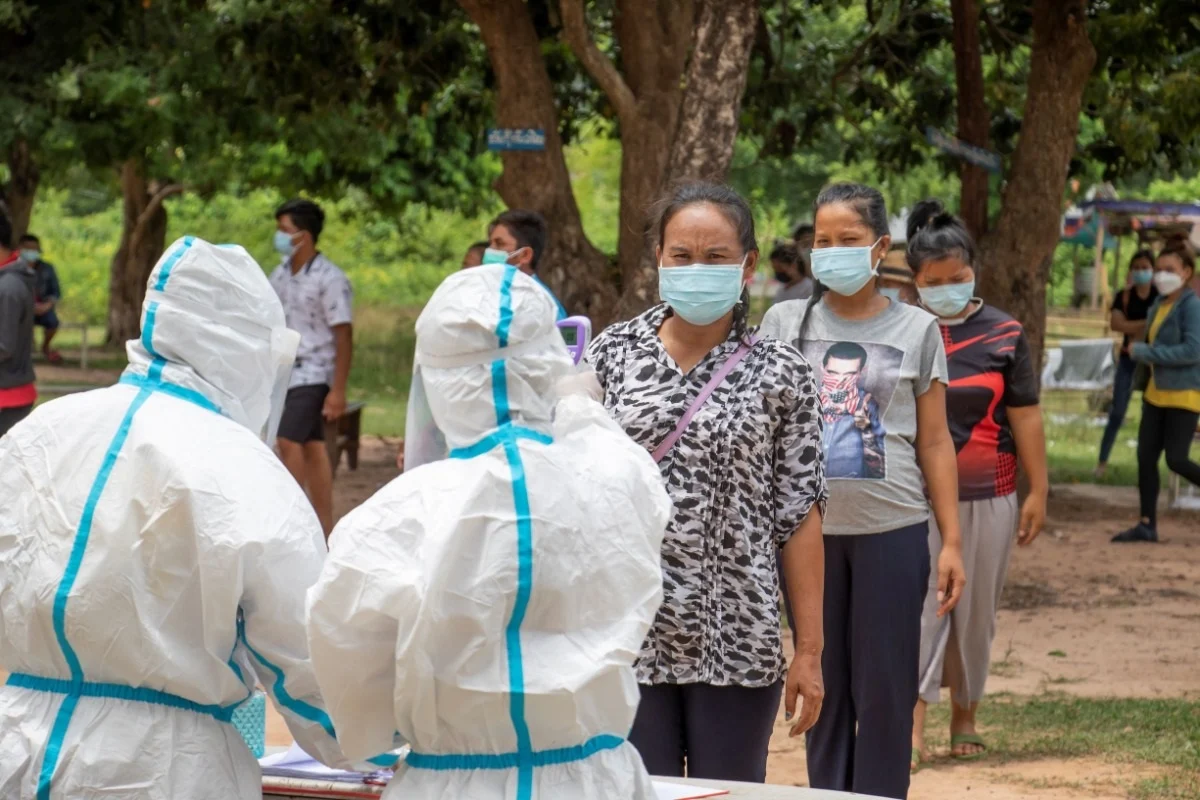
Health workers and WHO staff speak to villagers during the disease surveillance efforts.
Preparing for and responding to emerging infectious diseases and public health emergencies is a priority for Lao PDR. Since the early 2000s, WHO has supported the country in responding to a range of public health events including outbreaks of COVID-19, novel avian influenza, dengue, vaccine-derived polio, measles, diphtheria, as well as natural disasters and antimicrobial resistance (AMR).
To address these challenges, Lao PDR has an established surveillance system to detect acute public health events and has trained multisectoral rapid response teams. To strengthen core capacities to respond to health emergencies under the International Health Regulations (IHR 2005), the Ministry of Health has developed multi-year National Health Security Workplans.
The country has demonstrated strong progress in improving core IHR response capacities, and while the COVID-19 pandemic was an unprecedented challenge, it also acted as a stimulator for preparedness and response capacity, and infrastructure. However, gaps remain.
Critically, there exists a need to further strengthen core capacities, sustain and leverage investments made, and ensure the health system is resilient to effectively address public health emergencies now and in the future.
Results
- Rapid detection and response to outbreaks of COVID-19, dengue, influenza, acute watery diarrhoea, and natural disasters and AMR events.
- National Health Security Workplan for 2022–2025 developed and annually reviewed, alongside COVID-19 reviews and preparedness simulations.
- Rapid response teams and 110 field epidemiologists trained to conduct disease surveillance and response across all 18 provinces.
- Use of District Health Information Software-2 (DHIS-2) for digital surveillance data management expanded to all districts in all 18 provinces.
- Expansion of COVID-19 testing by real-time PCR or GeneXpert to 18 provinces, along with central-level testing for mpox, chikungunya, Zika, dengue, diphtheria, pertussis and other diseases, and quality assurance.
- Leveraging of the National Influenza Center to strengthen surveillance of threats, including dengue and AMR, and advances in genomic surveillance to detect and respond to emerging COVID-19 variants.
- Establishment of the National Laboratory Biosafety Authority and National Laboratory Quality Authority, and development of regulations, guidelines and associated trainings and certifications.
- Expanded influenza testing to the subnational level – integrating with SARS-COV-2 testing.
Our partners
The Government of Australia through the Department of Foreign Affairs and Trade (DFAT) and Australian Aid
The Government of the United States of America through USAID, the Defense Threat Reduction Agency (DTRA) and the Centers for Disease Control and Prevention (CDC)

